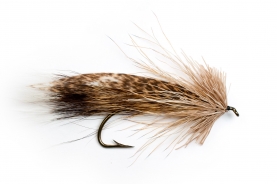Not sure if these questions should be posted in the Fresh or Salt forums, so will repost in more appropriate spot if needed.
Relatively new to Comox valley area and would like to experience some spring fly fishing opportunities. Work and family obligations make epic multi-days trips impossible right now so would really like any tips that help me to go cast a line if I can find the odd morning/evening etc to go and fish. Any tips that would shorten the "go figure it out for yourself" time line would be much appreciated.
I have a love for anadromous trout from my earlier days chasing big steelies up north and would really like to experience fishing for their smaller cousins the sea-run cutthroat. It is a fishery for which I have no experience. I am guessing that fry patterns are recommended but do not know whether I should fish rising or falling tides, whether fast strip (bone fish style) or slow swing tends to produce, and where along the many many miles of shoreline I should target my efforts. Makes sense that any creek or river mouth would do but if anyone can help me focus those efforts in a 45min drive radius around Courtenay/Comox area that would be much appreciated. PM is fine if preferred.
Many thanks and tight lines.
Relatively new to Comox valley area and would like to experience some spring fly fishing opportunities. Work and family obligations make epic multi-days trips impossible right now so would really like any tips that help me to go cast a line if I can find the odd morning/evening etc to go and fish. Any tips that would shorten the "go figure it out for yourself" time line would be much appreciated.
I have a love for anadromous trout from my earlier days chasing big steelies up north and would really like to experience fishing for their smaller cousins the sea-run cutthroat. It is a fishery for which I have no experience. I am guessing that fry patterns are recommended but do not know whether I should fish rising or falling tides, whether fast strip (bone fish style) or slow swing tends to produce, and where along the many many miles of shoreline I should target my efforts. Makes sense that any creek or river mouth would do but if anyone can help me focus those efforts in a 45min drive radius around Courtenay/Comox area that would be much appreciated. PM is fine if preferred.
Many thanks and tight lines.


